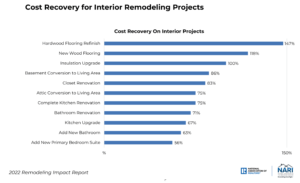Many economic experts believe the current inflation cycle will abate within a few years and interest rates will begin to soften.
Let’s assume that you could have purchased your dream home in 2020 for $650,000 with 20% down and that you could have financed the balance with a 30-year, 3% mortgage. Your payment would have been $2,398.53 per month. Let’s also assume that with softening prices, today your home may be worth $630,000. The result is you have equity of $110,000 and you still have a low interest rate. Not a bad position to be in overall but you have lost some equity in your home.
Let’s assume that today, you decide to continue to wait because interest rates have skyrocketed. If you were able to buy that new home today for $630,000 with a 6.5% mortgage and you put down 20% or $126,000, your monthly payment on a 30-year mortgage would be $3,869.49. Unfortunately, for many, this is more than the household budget can handle. However, your savvy mortgage broker tells you, you can qualify for a 3-2-1 buydown so your first-year mortgage payment could be $2,263.19 and increase to $2,553.69 the second year and $2,861.66 the third year.
Now, let’s assume again you hold this home for another three years or so while the market goes through more softening but then interest rates come back down because a potential recession is requiring the feds to drop interest rates again. What will happen to housing prices as the rates come back down? That is right, they will go up again.
Many economic experts believe the current inflation cycle will abate within a few years and interest rates will begin to soften. As they do, your home value will likely increase. Buying a home today utilizing a buy-down option could help you accelerate your equity gains in a few years because you are buying in a down market!
The home you could have bought today could go up in value a conservative 5% or $31,500 and the home is then worth $661,500. You would have equity of at least $157,000. At this point, you may choose to refinance your existing loan balance of around $500,000 at say 4% on a 30-year mortgage. Your new payment would be $2,406.17 and you have gained quite a bit of equity. If you continue to wait, you may miss an opportunity to gain future value and equity.
The above example is in general terms and I have made some broad assumptions. Please talk to your real estate agent and mortgage broker about your own situation, which may or may not fit this example.
Real estate is like many other commodities. Prices and interest rates are affected by supply and demand, but over time the market reaches equilibrium where supply, interest rates and demand adjust to market conditions.
Is it always a good time to buy or sell? Not necessarily, but if you have a game plan and understand that market forces always change and a new equilibrium will set in, you can buy and sell in almost any market and come out a winner over time. Conversely, waiting for the market to improve or change without a game plan could be a very bad strategy without understanding the basics of market forces and the dynamics that change them over time. QCBN
By Nick Malouff
Nick Malouff is the CEO and co-owner of Better Homes and Gardens Real Estate BloomTree Realty with offices in Prescott, Prescott Valley and Cottonwood. To reach Malouff or a highly qualified agent, please call 928-925-2023











